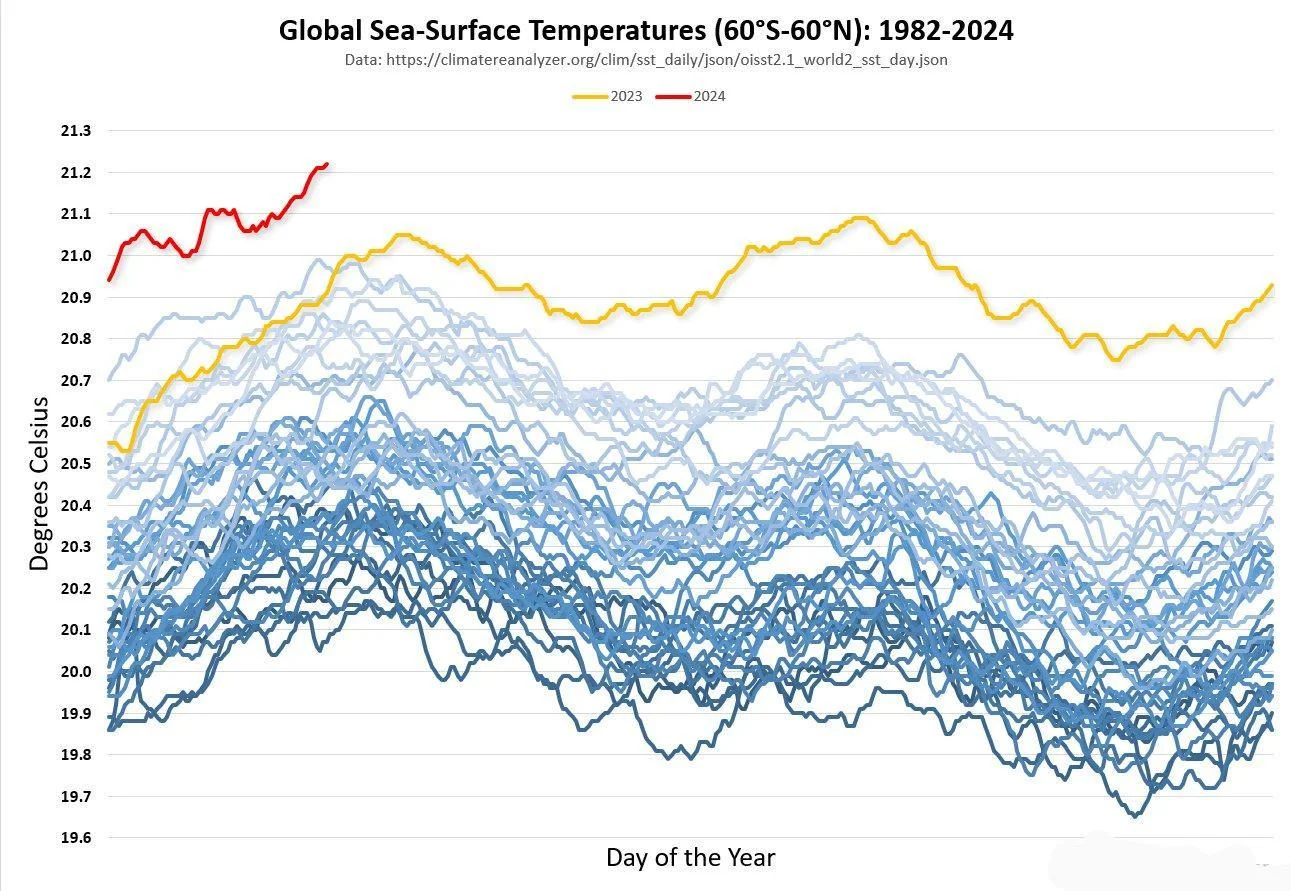Last year's alarm over record-breaking ocean temperatures has not abated. Recent data suggests that the concerning trend persists well into 2024.
Reddit user SPY225 compiled data from the Climate Analyzer into a visually informative chart, highlighting the alarming surge in ocean temperatures.
The line on the chart has already surpassed 21.2 degrees Celsius (70.16 degrees Fahrenheit), exceeding last year's peak. If this trajectory continues, we anticipate further unprecedented weather extremes, signaling a somber indication of our role as stewards of the Earth.

This post may contain affiliate links. As an Amazon Associate, I earn from qualifying purchases.
Comments
Post a Comment